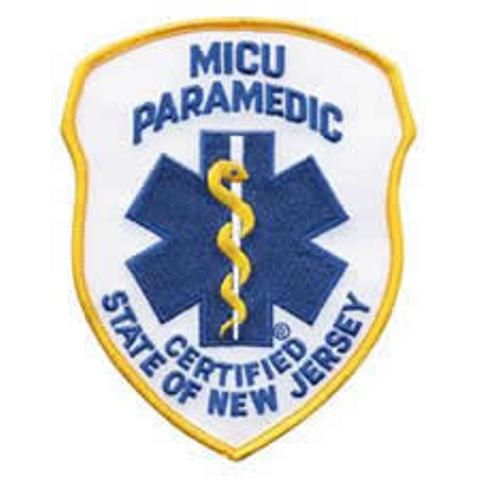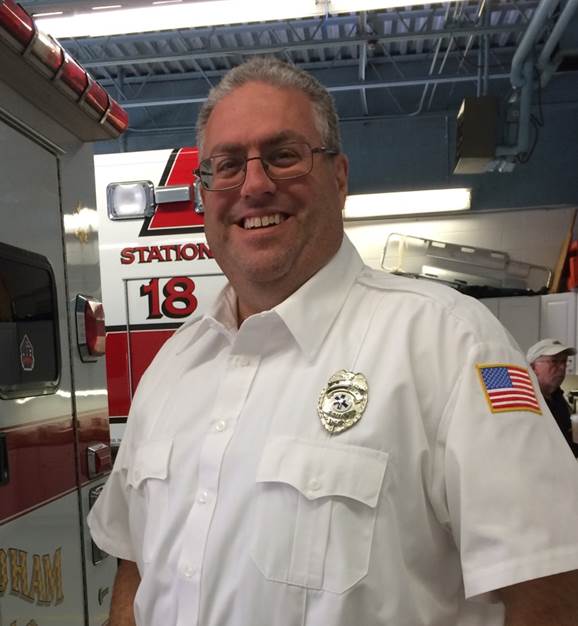|
As class heads in to our third quarter, the materials and skills shift from understanding medical emergencies and associated Nature of Illness (NOI) to traumatic injuries and their associated Mechanism of Injury (MOI).
Trauma is generally considered the gorier part of EMS, and deals with direct bleeding, fractured bones, and other physical injuries to the body that generally result from the application of an outside force on the patient. As such, there are a wide number of practical skills involved in providing interventions to our patients, including proper techniques for bandaging and tourniquet application. But trauma isn't always obvious. Car accidents, sports injuries, slips and falls can all cause traumatic injuries to bones, muscles and internal organs, often with no visible external injuries. Some of these internal injuries are treated almost exactly the same as internal bleeding caused by medical issues, such as acute abdominal pain due to appendicitis, or altered mental status due to stroke. . But the effects of the MOI are supposed to guide us to an index of suspicion that there may be more going on with our patients, concerns that may require more care and a deeper assessment for injuries that just simple pain or confusion would appear to warrant. So we get a bit more touchy-feely with our fellow students, and start learning to look for DCAP-BTLS.
0 Comments
In additional to classroom lectures and practical skill building exercises, EMT students are required to complete 10 hours of practical experience outside the classroom. For most students, this means time in the Emergency Department (ED) of a local hospital. Thanks in part to the fact that my EMT course is being taught through Atlantic Health's training arm, I was lucky enough to swing a shift with our local paramedics from the Mobile Intensive Care Unit or MICU.
Paramedics are an absolutely critical part of the EMS community. While EMTs have basic life support skills that are more than sufficient for many situations, Paramedics bring options for a higher level of care, especially when it comes to pharmacological options such as providing pain and other medications (often intravenously). They also provide advanced airway management options, such as intubation, that EMTs are not qualified to perform directly.
Of course, it's also useful for EMTs to understand these interventions, and be prepared to support Paramedics in their application and use. This is why Advanced Life Saving (ALS) skills are covered as part of the EMT coursework. But not all calls require Paramedic interventions, and one the key takeaways I got from my time with Kathy and her partner Dave was just how critical the basic EMT assessment skills are in terms of determining when and why Paramedics are truly needed. After all, if they are responding to a call of questionable need simply because an EMT decided to request Paramedics "just in case", it certainly means that they are unavailable for someone else in a truly life-threatening situation. I had a conversation with one of our volunteers, Cliff, who is also taking EMT classes. As far as coursework goes, he's still in the beginning stages, learning basic anatomy and getting familiar with the steps of patient assessment.
As we're taught in class, patient assessment breaks down in to a series of discrete steps, starting with Scene Size-Up, moving in to a Primary Assessment for life-threats that require immediate interventions, and then on to Secondary Assessment and History Taking during which we more fully investigate the chief compliant(s) of our patients. Finally, we provide appropriate interventions and re-assessments while transporting them to the hospital. Cliff expressed concerns about the order of doing these various activities, ones that I also wrestled with. The coursework doesn't exactly feel right all the time, because the focus is on ensuring (and demonstrating) a complete understanding of ALL the steps in patient assessment, while the vast majority of real-world situations aren't nearly as linear. In particular, Cliff and I discussed the end step of the Primary Assessment (referred to as the "Transport Priority Decision"), and it really drove home for me the difference between reacting with a sense of urgency to an emergency situation, versus acting as if there is an emergency itself. My EMT course is being taught through Atlantic Training Center, using facilities at the Morris County Public Safety Academy. The Academy not only supports Police and Fire academies for the county, it's also co-located with the Morris County Office of Emergency Management (OEM) facilities. Although not formally part of the EMT course, my class was exceedingly lucky to have a quick tour of the 911 emergency dispatch center and the Emergency Operations Center (EOC), thanks to Scott DiGiralomo, Director, Department of Law and Public Safety/Emergency Management Coordinator. A mere 2 years old, the center is a technological marvel, reminiscent of any major Hollywood movie depicting high-tech command-and-control centers, from space flight operations to military war rooms. As my actual career has been in the high-tech and telecom industries for 25-plus years, I found the technical aspects quite fascinating, from real-time video feeds from around the county (including the helipad at Morristown Memorial Hospital, used by our county airborne paramedics), to GPS-enabled tracking of emergency services personnel and equipment.
The amazing job these emergency dispatchers perform really can't be understated. For those that are curious, I've linked to a YouTube video that gives you just a small taste of the complex multi-tasking these individuals perform, minute by minute, staying on-line with callers for as long as necessary with simultaneously coordinating with a host of dispatched resources. They truly are one of a kind, and probably don't get half the recognition that they deserve.
|
AuthorJon Alperin, one of our MFAS volunteers, shares his journey to becoming an NJ certified EMT. from the Start
Here is Jon's journey, presented in time order:
Archives
June 2016
Categories
All
|



 RSS Feed
RSS Feed
